how do spotted lanternflies damage trees
According to the PA Department of Agriculture there is no knowledge the SLF kills trees and plants. They eat the sap as if it were another host tree.
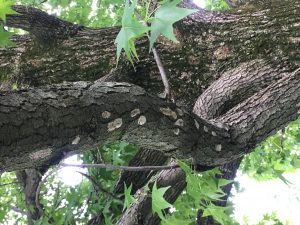
What Trees Do Spotted Laternflies Like Green Giant Services
Precisely they cause vomiting and other adverse reactions to your furry friends.

. When feeding the lanternflies excrete a sugary substance referred to as honeydew which causes the growth of a black mold. Spotted lanternflies are a nuisance mainly because they are unsightly and have harmful effects on otherwise economically important plants. The Spotted Lanternfly does not attack all types of trees.
SLF are relatively new to North America and there is much that we dont know. The Spotted Lanternfly Lycorma delicatula is native to China and was first detected in Pennsylvania in September 2014. Due to this spreading nature of spotted lanternflies they can harm a wide range of trees and plants.
SLF is a sap-feeding insect. Check your trees regularly if you are at risk for this pest. They feed on over 70 plants including important forestry and agricultural crops.
Spotted lanternfly feeds on a wide range of fruit ornamental and woody trees with tree-of-heaven being one of the preferred hosts. Because they move in large groups these insects are unsightly and affect the quality of life wherever they go. Its what they leave behind that injures the.
The insects that have the ability to lay eggs everywhere have more chances to survive and spread. The spotted lanternfly is one of most maligned invasive species in Pennsylvania and for good reasons as they can cause serious and irreversible damage to your trees if they arent dealt. Spotted lanternflies are invasive and can be spread long distances by people who move infested material or items.
When the Spotted Lanternfly feeds on a host tree it digests sap and releases honeydew that promotes mold and fungi growth. In the case of the spotted lanternfly they can cause leaf curling and dieback in trees vines crops and other types of plants. High levels of adult SLF feeding can reduce the photosynthetic activity of some trees.
How do spotted lanternflies damage plants. Spotted lanternflies feed on the sap of a plant and when there are high populations of them they can cause significant damage. Or use a sticky strip to collect and then kill the eggs and insects by drowning or burning.
Spotted Lanternflies harm host. The most visible impact will be the production of honey dew by the SLF as they feed. However after feeding on these trees extensive damage does take place.
They suck fluids from the plant not from the fruit or leaf tissue but from the trunk and limbs along the leaf veins. They attack plants and trees such as fruits and hardwoods causing extensive damage in the process. However the poison slows them down and eventually kills them.
The spotted lanternfly excretes the honeydew on the trees while sucking its sap. Where they feed and in what abundance rotates and it appears to be tied to sugar flow in the trees. Pay particular attention to your Tree of Heaven plants if you have them.
Most think that the trees are damaged by the amount of liquid that the lanternflies drain from the tree. Spotted lanternfly egg masses feed on trees and can cause serious damage the PA Department of Agriculture has already deemed them a threat to the states fruit and logging industries. Host Trees nourish and support insects during all or some of the.
In fact spotted lanternflies seem to gravitate towards milkweed plants. The most damage to-date has been observed in vineyards ornamental nurseries and peoples backyards. Honeydew can attract wasp and bee populations but can also be a growth medium for fungi such as sooty mold which can stunt the growth of the tree and cause further damage.
Do Spotted Lanternflies kill trees and plants. They can cause wilting and oozing sap. However most trees will survive.
However since Spotted Lanternflies are pretty new to Pennsylvania there is no complete list of trees that are susceptible to damage from for this invasive pest. Spotted Lanternfly bugs feed on over 70 species of plants. Spotted lanternflies will destroy trees by producing sooty mold with the honeydew that they produce.
They can work wonders to eliminate existing insects. Trees and plants have been described as giving off a fermented odor when this insect is present. Spotted Lanternflies feed on the sap of woody plants and trees and when there are large populations of them they can cause significant damage to them.
They are also considered a nuisance pest because swarms of hundreds or even thousands of Lanternflies can invade homes and businesses. Spotted lanternflies secrete a sugary sticky substance called honeydew. Spotted Lanternfly Damage.
Weak or previously damaged trees may succumb to large volumes of the SLF feeding. The spotted lanternflys preferred host plant is Ailanthus altissima also known as the tree of heaven which has been introduced to numerous countries including South Korea Japan and the USA. It is possible that after heavy feeding multiple years of sustained damage or in particularly dry years SLF may cause significant damage to ornamental and shade trees.
Its annual damage exceeds hundreds of millions of dollars in lost agricultural production. A Host Tree is a tree that is known to be a target of pests in this case the Spotted Lanternfly. You can use a rock or leaf and your hand to squash them manually if found.
They can also affect your pets especially dogs when ingested. Death of ornamental trees because of spotted lanternfly feeding has not yet been reported. The spotted lanternfly causes serious damage in trees including oozing sap wilting leaf curling and tree dieback.
As of now we have no knowledge that SLF kill trees and plants. To get rid of spotted lanternflies consider planting more milkweed plants around your property. In Korea SLF have had a major destructive impact on grapes and grape products such as wine.
The adults and larvae of the Spotted Lanternfly damage host plants by feeding on sap from stems leaves and the trunks of trees. Spotted lanternflies cause damage to plants by sucking sap with the waste product of their diet encouraging fungal disease. The most damage to-date has been observed in vineyards ornamental nurseries and peoples backyards.
Davey arborist Jason Gaskill explains how Spotted Lanternfly SLF causes damage to trees and the common signs and symptomsHere are common signs and symptom. In severe cases the entire trees foliage may be wilting and the trunk could have open oozing wounds. However SLF can weaken trees and plants.
They feed on over 70 plants including important forestry and agricultural crops. Spotted Lanternflies will cause this damage to landscape trees by piercing and sucking the sap out of the tree.
An Update On The Invasive Spotted Lanternfly Lycorma Delicatula Current Distribution Pest Detection Efforts And Management Strategies Pest News Anr Blogs
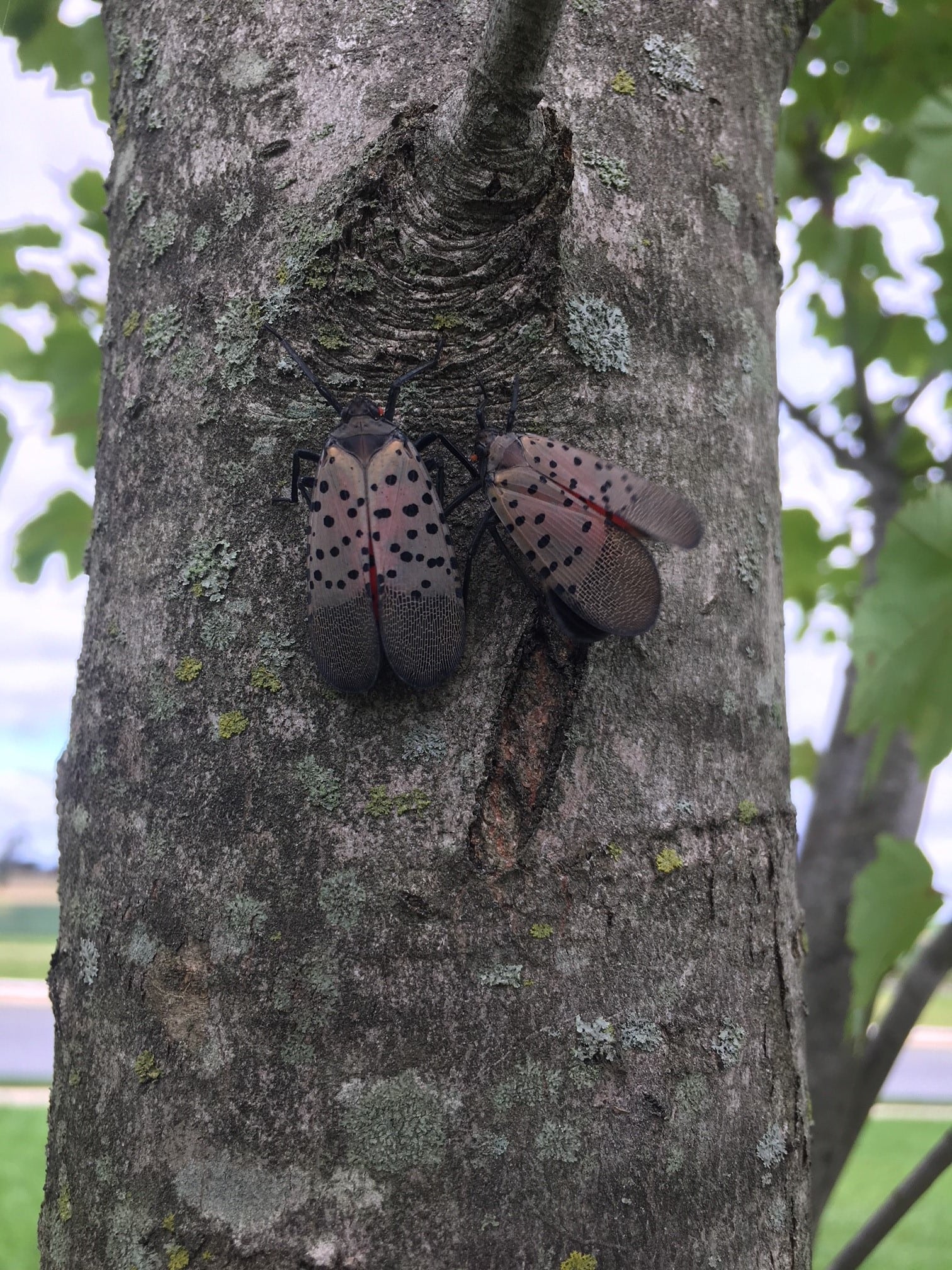
Spotted Lanternfly Control In Lancaster Tomlinson Bomberger
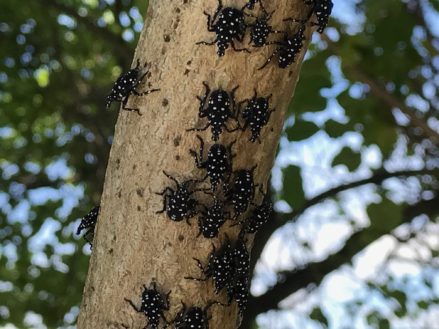
Spotted Lanternfly Control In Lancaster Tomlinson Bomberger

Everything You Need To Know About Spotted Lanternflies In Pennsylvania
An Update On The Invasive Spotted Lanternfly Lycorma Delicatula Current Distribution Pest Detection Efforts And Management Strategies Pest News Anr Blogs
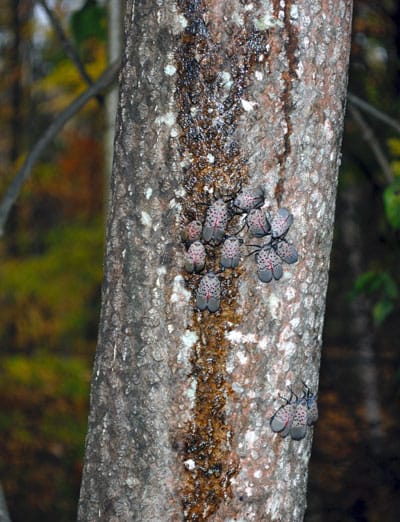
Facts About Spotted Lanternfly In New Jersey Pennsylvania Organic Plant Care Llc Organic Lawn Plant Health Service In Hunterdon Morris Somerset Union Counties Nj And Bucks County Pa

Infestation On Staten Island Leads To Damaged Trees Ruined Gardens Is The Spotted Lanternfly To Blame Silive Com

Spotted Lanternfly Faqs For Connecticut Rayzor S Edge Tree Service
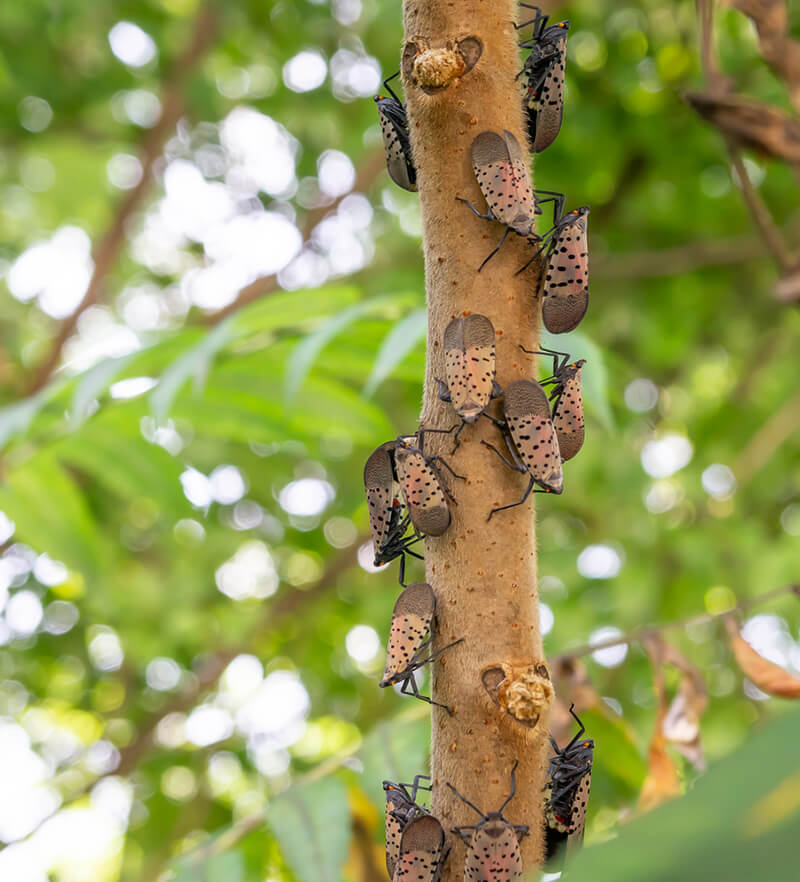
Spot The Spotted Lanternfly Stauffers
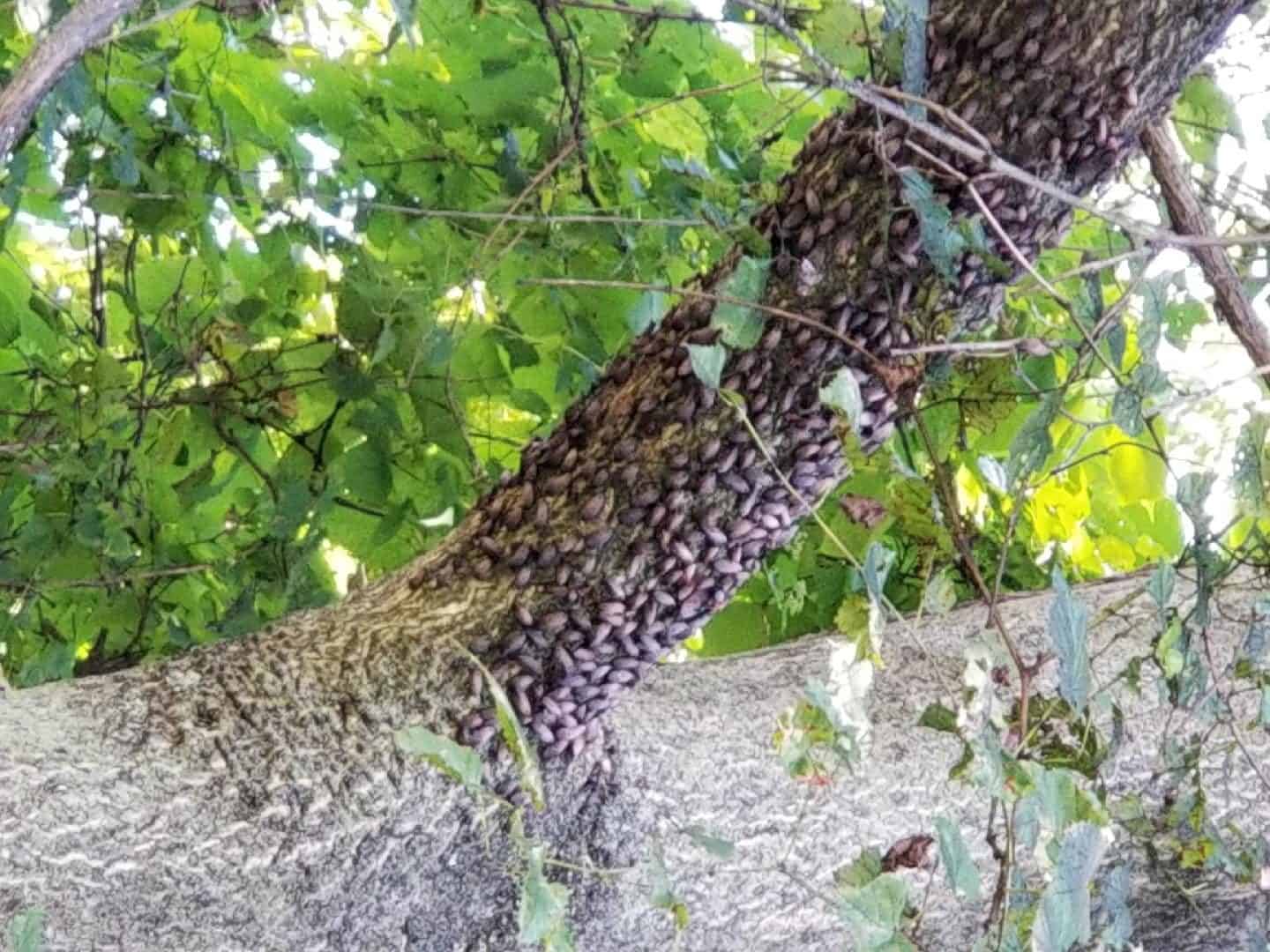
What Trees Do Spotted Laternflies Like Green Giant Services

Be Alert For Spotted Lanternfly Bygl
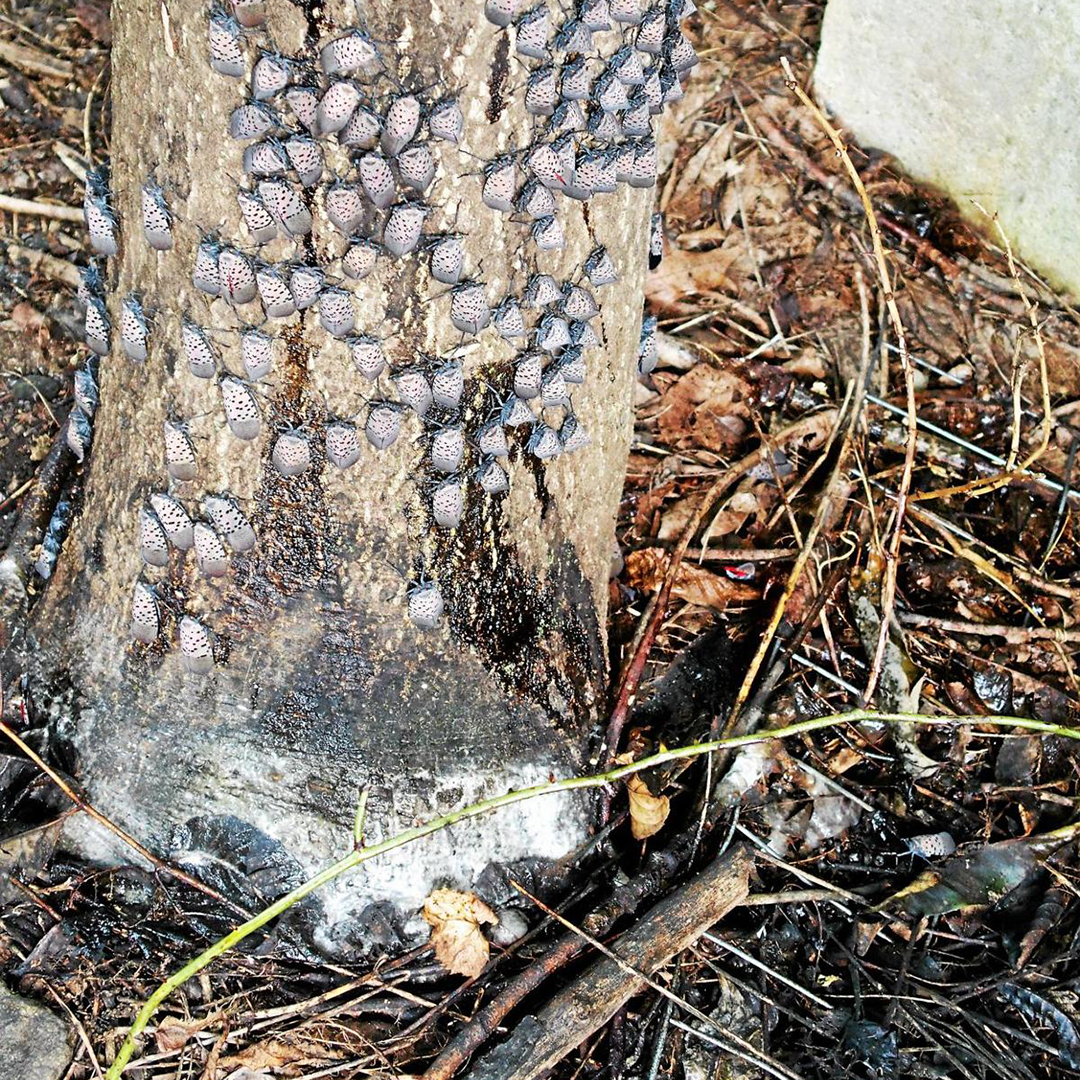
What Do Spotted Lanternflies Do To Trees Spotted Lanternfly

Learn How To Kill The Spotted Lanternfly Triblive Com
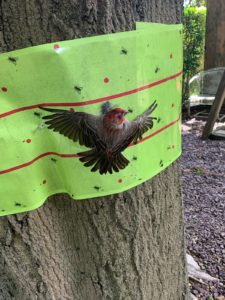
Caution Birds Getting Stuck On Lanternfly Tree Tape Dominion Pest Control
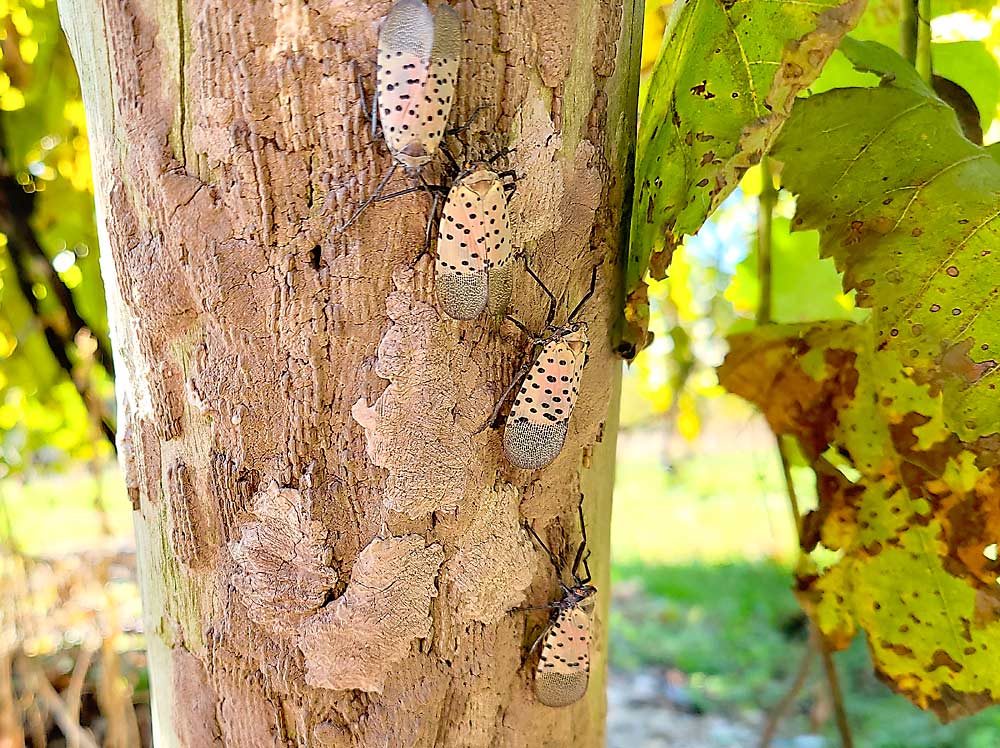
Fighting Spotted Lanternfly Good Fruit Grower
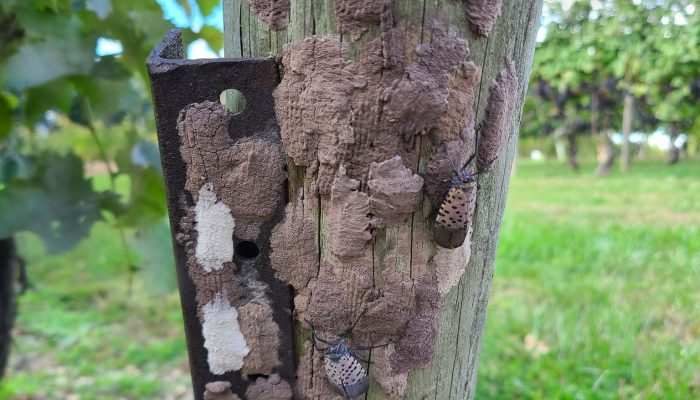
Stop The Spotted Lanternfly Identify And Destroy Their Eggs Philadelphia Parks Recreation City Of Philadelphia
An Update On The Invasive Spotted Lanternfly Lycorma Delicatula Current Distribution Pest Detection Efforts And Management Strategies Pest News Anr Blogs
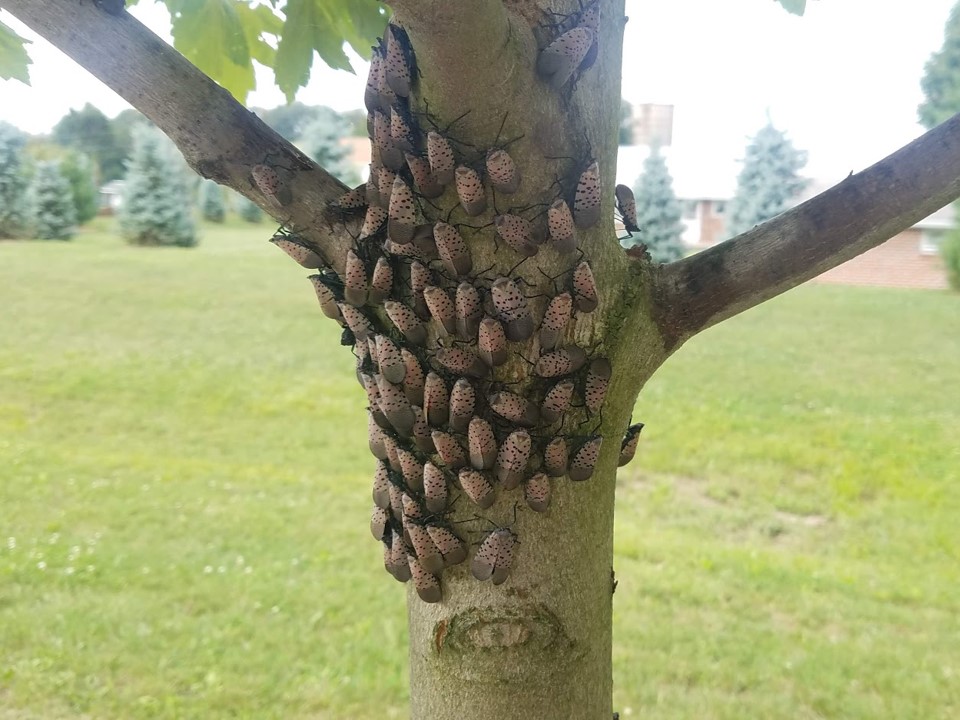
Educators Offer Tips On How To Manage Spotted Lanternflies On Ornamental Trees Penn State University
